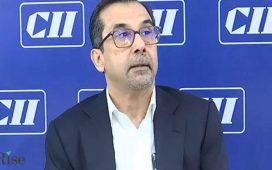
“One can make money, one has to be patient and I think it requires all kinds of climate providers to come on the table and make this happen. It is the greatest opportunity – one of the three biggest opportunities of the next two decades,” he said while speaking at an event co-hosted by the Global Energy Alliance for People and Planet (GEAPP) and the Observer Research Foundation (ORF) in the capital. The event was held from November 1-3.
Jhaveri observed that the climate space reflects a little bit of barbell effect over the last five years. “On one side, there is a lot of money chasing new climate ventures in the climate tech space, while on the other, there are commercially proven climate business models where a lot of large capital is flowing in. But there is a big missing middle where businesses and companies don’t have the capital to scale up very rapidly. That is where we focus,” he said.
Jhaveri added that their focus is not only on investing in building innovative business models that can solve a climate problem but also creating a sustainable model by eventually driving profitability. “But it takes time and effort. Because you also have to build ecosystems around it,” he stated.
Explaining how the approach is to invest in innovative business models instead of technology, Jhaveri said: “There is a subtle difference. For instance, we have built an electric mobility business in India which is using electric buses and it is addressing two problems. One is the problem of public transportation where utilities are using diesel and CNG-based buses. But we are able to offer solutions providing electric buses which are economically more competitive than the diesel buses to transport people.”
Jhaveri said that the same model is being taken to deliver direct mobility services to consumers. “There are inter-city mobility services where we are using electricity again to provide such solutions and the cost at which we deliver that solution is more competitive than what diesel buses are offering,” he said. In a second example, he explained how they are converting waste into wealth. Municipal agricultural waste is processed, methane extracted and converted to renewable natural gas. “It is a 100% commercial model but it requires scale to become profitable.” Jhaveri said this model has an entire ecosystem that collects post-harvest waste from 5,000 farmers, transports and stores it for 10 months, then uses technology to process it and finally sells it as a commodity that replaces fossil fuel and is 100% green. “That is innovation at scale to drive business outcomes, not necessarily to build a new way of carbon capture or methane extraction.”
Jhaveri said that 4Cs — country, corporate, citizen and capital — have to be in sync to ensure changes happen. “Because what we are addressing is changing the way we consume energy.”
Elaborating further on the need to innovate, Jhaveri said it can help participants reap rewards. “Risk and return are two sides of the same coin. I think the world has to innovate, the government has to innovate and capitalists also have to innovate in the way we invest capital,” he added.








